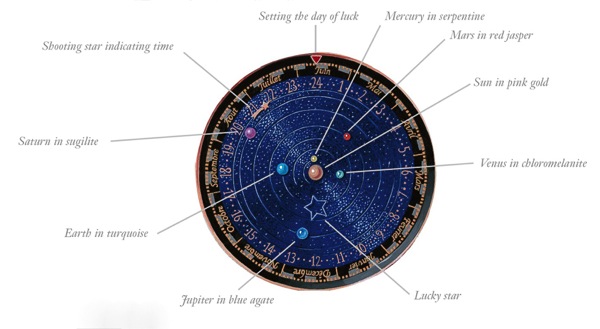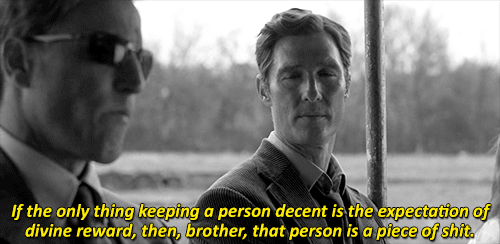Yearly Archives: 2014
Dept. of Alarming Developments
Somehow, this little girl

started first grade today.
Certain area uncles are deeply vexed by this development.
Dept. of Silly Cycling Things
Someone has invented a new cycling “competition.” Well, let’s call it an activity, or maybe a misadventure. It’s called Everesting, and the gist is this:
- You pick a cycling climb somewhere near you
- Sort out its elevation gain
- Ride repeats until you gain 8,848 meters (29,029 feet in American)
- Claim your Everest!
Right. Very, very silly.
My first thought was “gosh, that’s absurd.”
My second was “I’ll bet you can’t do that in Houston without riding way more than a century,” and it turns out I’m right.
The tallest bridge in the area is the Kemah bridge. It’s got an elevation gain of 66 feet, an average grade of 4%, and is half a mile long.
You’d have to ride it 440 times, covering 220 miles, to claim an Everest.
Then, after my ride tonight, I noticed something disheartening. I only started using Strava in April, so I’m missing the first three months of the year, but these are my YTD stats:

That’s right. Given that about 5,000 feet of my climbing was on the MS150, it’s entirely possible I won’t ride an Everest’s worth of climbing in the whole of 2014.
Lifeless eyes, black eyes, like a doll’s eyes…
The good folks at WHOI have a pretty cool underwater drone they use to study great whites. Take a look at their footage.
(Don’t miss this.)
This is awesome
This story about mistaken email identity reminds me of a tale from college.
Phone numbers on campus were, in dorms at least, more or less permanently set — room XXX would have phone number YYY, and it would stay that way. If you moved, your phone number changed. And if you knew that Dave lived in 213, you knew what is his phone number was — generally, one more that his neighbor to one side, and one less than his neighbor on the other.
This scheme was in place for years, and campus telecom liked it that way.
Well, they built a new rec center on the far site of campus, and the number allocated to the raquetball court reservation desk was a single digit off my friend M’s dorm room. He got LOTS of wrong numbers, often starting early on Saturday mornings. Campus telecom wouldn’t change either number despite his complaints, so he got creative.
He started accepting reservations, and giving out confirmation numbers.
It took about a week, but pretty soon the number for the raquetball courts changed. I can’t imagine how many irate players screaming about their confirmation number were involved, but 20+ years later it still makes me giggle.
This is the platonic ideal of “barnburner”
Kentucky Secretary of State and Democratic senate candidate Alison Lundergan Grimes took Mitch McConnell to the goddamn WOODSHED in this speech — and he was sitting right in the room. The cutaways to his face are fucking DELICIOUS; he clearly has no idea what hit him.
I mean. DAMN.
McConnell had to follow her, which put him behind a pretty serious eight ball, and he absolutely failed to help himself in any way — as Grimes predicted, he basically just tried to run against Obama, who, as she pointed out, isn’t actually running for any office in Kentucky.
Attention Heathen Nation
Please join me in wishing Agent Triple-F a happy nameday.

(File photo. Niece not included.)
Thug Notes just keeps getting more awesome
This week: At The Mountains of Madness, by H.P. Lovecraft.
Way to go, CIA!
Say, you know how international humanitarian efforts, like polio eradication, are generally welcomed anywhere because they’re free of hidden agendas?
Yeah, well, so did the CIA, so they decided to fuck that up for everybody.
Christ.
Books of 2014, #13: Bark, by Lorrie Moore
I’ve been a fan of Moore’s stories for a long, long time, largely on the strength of this passage:
“The thing to remember about love affairs,” says Simone, “is that they are all like having raccoons in your chimney.”
“We have raccoons sometimes in our chimney,” explains Simone.
“And once we tried to smoke them out. We lit a fire, knowing they were there, but we hoped the smoke would cause them to scurry out the top and never come back. Instead, they caught on fire and came crashing down into our living room, all charred and in flames and running madly around until they dropped dead.” Simone swallows some wine. “Love affairs are like that,” she says. “They are all like that.” (“Dance in America”, from Birds of America)
Right? RIGHT? Moore’s writing has been heretofore dominated with a turn of phrase we might call Lorrian, and which I eat up with a spoon given half a chance. So it’s with disappointment that I report that her latest, Bark, is almost free of them. Only a few times did I feel I was really in the groove of the sort of writing that typified Who Will Run The Frog Hospital, for example. It’s still better than most, but not as solid as I was hoping.
Or, maybe she’s just doing something different, and I don’t care as much for the new thing; I suppose that’s possible. And she is not, of course, obliged to keep writing in the mode she did 20 years ago. (It’s fair to note that this is her first book of stories in 16 years, and that some of them I’d seen before in The New Yorker.)
The quips aren’t completely gone, though, so there’s some comfort in that:
- “Every family is a family of alligators.”
- “[Kentucky] is like Ireland, but with more horses and guns.”
and my favorite, which is this bit of dialog:
“You’re from what part of Chicago?”
“Well, just outside Chicago.”
“Where outside?”
“Michigan.”
My gripes about a lack of Lorrian turns of phrase notwithstanding, it’s still better work than most story writers. Moore’s world is one of disconnection and desperation that’s gone to flippancy (which is where the quips come from), and she still paints these pictures vividly, even when she drags the material too far into current events (Abu Ghraib is referenced, e.g.).
The sixth story, “Referential” sent me scribbling notes more than most; it reminded me of Richard Yates’ “No Pain Whatsoever”, a heartbreaking story about an estranged, cheating wife visiting her doomed husband in a TB ward while her lover waits in the car. Yates, though, didn’t play with language like Moore (or like Nabokov, who’s referenced in the story’s postscript).
From the NYT review:
Probably no writer since Nabokov has been as language-obsessed as Moore, but while Nabokov saw himself as an enchanter, a Prospero of words reveling in his power, Moore is a darker spirit, skeptical of language even as she makes it do tricks. “Mutilation was a language,” one character reflects when she sees her son’s cutting scars. “And vice versa.” She’s the most Beckettian of Nabokovians. Her characters banter and wisecrack their way through their largely mirthless lives in screwball-comedy style, but for them it’s a compulsive tic whose aim is sometimes self-protection (utterance that warns others off and forms a protective shell) and sometimes just to fill the void; the point is its pointlessness. “She had given up trying to determine his facetiousness level,” KC says of Dench, her relentlessly witty boyfriend. “She suspected it was all just habit and his true intent was unknown even to himself.” KC and Dench are the sort of people who note that a dried-out spider plant looks like “Bob Marley on chemo,” and that uterine cancer is “the silent killer. Especially in men.”
The eighth and final story, “Thank You for Having Me,” contains a final and bleak example of Moore’s characters’ not-quite-whistling past the graveyard — in this case, as with many, the source of ennui is advancing middle age: “Without weddings, there were only funerals. I had seen a soccer mom become a rhododendron with a plaque.”
Anyway, if you’re a fan of Moore, you’ll read it. If you’re interested in Moore, though, this probably isn’t the place to start.
Books of 2014, #12: Galveston, by Nic Pizzolato
Whoo-boy. For the record, I finished this book back on the 7th of JUNE, so my “behind-ness” is reaching truly amazing levels.
Pizzolato, of course, is the genius behind HBO’s True Detective, so when I realized he’d written a novel I had it on my Kindle in about 2 seconds.
It’s solid, though not as cleanly assembled as the (much more ambitious) True Detective. Our hero is dirtier than either of TD’s cops, and less given to philosophical ravings; our bad guys are less gothic and menacing. There’s an entire lack of backwoods murdering goons, and at no point do we encounter nubile young girls wearing antlers in their final repose. But it’s still solid, and there’s more than a little here that rhymes, thematically, with the HBO show; the biggest is the presence of a split narrative, taking place in two distinct timeframes but linked by a single character — who, inevitably, makes little men out of beer cans.
Definitely worth your time if you loved the show — significantly moreso than The King in Yellow.
Yet again we wonder why anyone listens to the likes of Gartner
For my whole career, I’ve been aware of babble and noise coming from “research” firms like Gartner and IDC. Their publications are, nearly always, bizarrely wrong or completely irrelevant to reality, designed mostly to please consultants who cite them and clueless CIOs who read them and feel clever, but neither pursuit has traditionally been tightly coupled to reality.
One of the drums they’ve adopted to beat loudly and often is the supposed decline of Apple, so much so that they declared Apple would suffer a DECREASE in Mac shipments this quarter — an announcement they made in advance of Apple’s own quarterly reports.
They were, of course, very very wrong, as Apple reported double-digit Mac sales growth in the period.
Apple’s sales figures not only contradict both IDC and Gartner figures, but also both firm’s market conclusions. IDC specifically reported that Apple’s Macs “lost market share over the past year. In U.S. shipments, Apple slipped to become the No. 4 PC maker, dropping from the No. 3 spot to come in at 10 percent market share, a 1.7 percent decline.”
IDC’s incorrect assessment of Apple’s double digit U.S. growth percentage as a year-over-year “decline” also calls into question its ranking of Apple as the fourth largest maker of conventional PCs in the domestic market, as the narrowest possible interpretation of Maestri’s “double digit” growth would essentially tie Apple with Lenovo in U.S. sales, according to IDC’s own figures.
More importantly, it also means Apple’s Mac sales continued to outpace the overall industry. Both firms reported that Apple lost share in the quarter. However, IDC estimated the U.S. PC sales increased by just 6.9 percent. Globally, it reported that PC sales fell by 2 percent in the quarter as Apple’s Mac sales grew by 18 percent.
Gartner estimated that U.S. PC sales grew at a slightly faster pace of 7.4 percent, still far behind the “strong double digit growth” Maestri reported for Macs. And Gartner’s numbers portray Apple and Lenovo as being even closer than IDC’s, suggesting that there’s no way Apple could have experienced a “double digit” percentage in growth without surpassing Lenovo to become the third largest vendor of conventional PCs in the U.S., behind HP and Dell.
Even more damning is the way they calculate PC vs. tablet sales:
In calculating their PC “market share” numbers, both IDC and Gartner include low end netbook and hybrid devices and Windows tablets. IDC also counts Chromebook web browser devices, but both firms exclude sales of Apple’s iPad from their PC sales figures.
If they had included iPads and other tablets in their PC figures, they would be forced to recognize Apple as being the largest computer maker by a wide margin. Despite much media handwringing about Apple’s year-over-year decrease in iPad sales, the company still sold 13.3 million iPads globally in the quarter, more than Samsung, Lenovo and Asus (the next three largest vendors, according to IDC) combined.
[…]
IDC, Gartner and Strategy Analytics have a long history of presenting carefully contrived data in press releases clearly designed to flatter their clients and denigrate their clients’ competitors, with Apple being a common target.
Beyond just serving the public relations needs of their clients, however, data promulgated by these marketing firms helped to obscure major shifts in the technology landscape, such as the clear and obvious shift away from conventional PCs that began with the appearance of iPad in 2010.
Fortune has an interesting backgrounder on how these estimates are created, and for whom, and (as you may surmise) reality doesn’t enter into it. Pleasing their clients does, and their clients are the other PC makers.
All of this is h/t Daring Fireball.
I have installed an important new Chrome extension
Tired of hearing about the Cloud? I’ve got just the thing.

Bill Hader reads more than you
Because of COURSE Daenerys would go to Starbucks
For Sale: 1979 Lamborghini Countach S
864 actual kilometers. One of only 50.
Expected bids $600,000 to $800,000.
Dept. of Cycling Milestones
When I bought my Surly — well, my SECOND Surly, after the first one was stolen — in August of 2012, I had them put a simple little bike computer on it to track speed, distance, time, etc.
It includes a “life of bike” mileage counter.
Today, as I finished my ride, that counter said this:

About 1,500 of that is since I started using Strava right before the MS150 (it keeps track, too). (For that matter, I’m working on my 8th 100-mile week in a row…)
I like biking.
Shocker.
If you search for privacy tools online, the NSA watches you more closely.
These people are criminals. Shut them down.
More on that awesome Orrey watch
Watch nerd site Hodinkee goes deep on the Van Cleef & Arpels Midnight Planetarium mentioned here back in June.
Because of course they are, and of course Will Ferrell is involved
A week or so ago, BoingBoing reminded us all of Manimal, a short-lived 1983 TV show — starring Simon MacCorkindale, which is a name I’d otherwise swear was made up — about a man with the power to turn into any animal (as long as it was a hawk or a panther, because budgets).
Inevitably, he used the power to solve crimes. Also inevitably, as they scheduled it against ratings juggernaut Dallas, it lasted only eight episodes. (Manimal and a few other similiarly short-lived 80s adventure shows were the subject of a large Metafilter post back in May, if’n you want to dig deeper.)
Now it turns out that, no word of it a lie, a revival film starting Will Ferrell is in development. Sadly, it appears my friend Chris’ proposed spinoff, “Maneril”, about a man who can change into any mineral, still languishes in development hell. Also, because I am a terrible person, I will point out that the otherwise brilliant idea for a fan-service MacCorkindale cameo in the film is unworkable due to his untimely death in 2010.
That settles it: True Blood is finishing strong
I said, earlier in the week on Twitter, that
Say what you will about TrueBlood sharkjumping, but Ted Cruz, “Republicunt,” and the T2 reference make me forgive a whole lot.
I can expand here, for funzies and setup:
Two characters — Eric and Pam — have to go undercover to a Republican fundraiser in Dallas for Ted Cruz (whom they NAME) while seeking an enemy (Sarah Newlin) for last-minute revenge.
Pam’s been given some of the best lines for years, but knocks it out of the park with her reaction to her sparkly and tacky gown: “Look at me; I’m a Republicunt!”
So I was happy, for sure, but it just got better when the director staged the surprise confrontation between Eric and Sarah in a “back of the house” corridor of whatever facility they were supposed to be in such that it was, almost shot for shot, a brilliant homage to Terminator 2‘s twin hallway sequences (in the mall, in the first confrontation between Arnie and the T-1000; and more specifically in the loonie bin when Sarah goes from running full tilit to an almost cartoon backpedal when Arnie comes around the corner). Robert Patrick, who played the T-1000, is a cast member on True Blood, which makes it even more fun.
But wait; there’s more!
Imagine my ecstasy this morning, then, to discover that Ted Cruz has been whining about being name-checked on the show!
Look, if you’re gonna bag on Republicans, Dallas, and Ted Cruz; coin the term “Republicunt;” insert homages to iconic SF films; AND get called out by real-life Republican assholes for doing it, as far as I’m concerned you can do no wrong. Nice going, TB!
HOWTO: Deal with absurd border checkpoints
Agent Q has this amusing bit of video to share.
The Lanterne Rouge
The Times has a cool, short bit up about Ji Cheng, currently in last place (“the Lanterne Rouge”) in the 2014 Tour de France, and the first Chinese rider to ever compete therein.
I must note that his position in the race’s General Classification is also irrelevant; races like the Tour are complicated team events with multiple “classifications” beyond the notion of a simple “first guy to Paris” prize, and these other competitions are sometimes a team’s primary focus.
Ji’s team, Giant-Shimano, isn’t really contending for the big win, but are absolutely in the running in the points classification. Ji’s role is to set things up for his sprinter, Marcel Kittel, who is currently 4th in points. Kittel has also won 3 stages, including the first one, which put Kittel in yellow for a day — something that doesn’t happen often for sprinters. That doesn’t happen without a solid team behind him, including the so-called Lanterne Rouge.
“Black people voted in Brooks County, Georgia. Prosecutors swept in with felony charges to make sure that nothing like this ever happens again.”
The headline is from Slacktivist, and is in no way an exaggeration. The whole story is worth reading.
The absolute best part of this is Paul being referred to as “M-Deezy”
Thug Notes takes on Dune.
Shocker!
37% of Mississippi Republicans would back the Confederacy today.
It’s the anniversary of the Moon Shot
As suggested by BoingBoing, let’s celebrate by watching Buzz Aldrin punch a moon-landing-denier in the face.
One time, Woz had a music festival
Your throwback to 1983 is here; it’s NEW WAVE DAY!
Included herein: Divynls; INXS; Wall of Voodoo; Oingo Boingo; The English Beat; A Flock of Seagulls; Stray Cats; Men at Work; and the Clash — with Mick Jones.
H/T: Accordian Guy.
Best Liartown EVER
Next on SciFi
Upcoming movies, probably.
I love this mad German bastard
Jeorg “Slingshot Channel” Sprave has created a football slingshot capable of launching a soccer ball the full length of a pitch.
Because of course he has.
When I am benevolent dictator, these will be everywhere
Biblio-mat dispenses a random book for $2.
Hello. We live in the future.
You may have seen this video of fireworks as shot by a remote controlled photo drone by now; if not, go watch. Use the HD option, and see it fullscreen (just turn the volume down if you find Andrea Bocelli as banal as I do). It’s pretty remarkable.
What’s not immediately obvious, or part of the story in most of the links I’ve seen, is what I think is the coolest aspect of this. It wasn’t shot with professional or exotic equipment. It was done with less than $2,500 worth of gear, including the “live view” features. Basically, it’s a high-ish end remote controlled quadcopter with a GoPro attached. Check the link; it’s not even CLOSE to the nicest quadcopter that company sells.
File under: Whoa
(The footnote is that while this vid was apparently shot with probably $2500 of gear, improvements have already happened in the product line that suggest it’s now possible for about half that.)
Dept. of Long-delayed photo publication
Here are the cruise pics from February.
I am very good at procrastination.
“A woman who hates you is playing the pianoforte”
Because I am a terrible person
I will now show you Donnie and Marie covering Steely Dan.
Update: Anonymous Heathen reaction, after admitting that he probably saw this on TV back in the 70s: “I think that show is at the root of some of my most serious psychological issues.”
It’s like something out of a Gibson novel
Columbia is plagued by a herd of feral hippopotamuses descended from the survivors of Pablo Escobar’s private zoo.
I do not mean to alarm you, but…
Here’s Janelle Monae doing Let’s Go Crazy. It may make you feel better.
Today in things that don’t exist, but should
WHERE IS YOUR GOD NOW
Dept. of Linguistic Incompatibility
Apparently, Germans can’t say “squirrel”, but it’s fun to watch them try.
Today in Meta-Westerns
Or, what happens when everyone can hear the omniscient narrator.
Hey, turns out? The No-Fly list won’t fly
A Federal court has ruled that the Kafkaesque No-Fly list is unconstitutional.
More at TechDirt.
Olbermann on Soccer and Ties
I really, really love this guy.
Look, number 6 is a gimmee, but the rest of these are hard
Buzzfeed’s best quiz EVER: Did This Happen In The Mississippi Senate Primary, Scooby Doo, or a John Grisham Book?
Somewhat embarrassingly, I scored a perfect 10.
I’m glad we don’t live in a police state
…where heavily armed cops could barge into your home and nearly kill your child trying to serve a no-knock search warrent.
Oh. Wait.
The Swat team that burst into the Phonesavanh’s room looking for a drug dealer had deployed a tactic commonly used by the US military in warzones, and increasingly by domestic police forces across the US. They threw an explosive device called a flashbang that is designed to distract and temporarily blind suspects to allow officers to overpower and detain them. The device had landed in Bou Bou’s cot and detonated in the baby’s face.
Stop letting police get away with behaving like military units. Policing is not a war. Cops who do things like this should be vulnerable to severe civil and criminal penalties. Only then will this stop.
(This coverage is, of course, at the Guardian. That’s shameful.)
Obviously, this happened in Florida
Coolest. Watch. EVER.
Of course, it better be, as the Van Cleef & Arpels Midnight Plantarium Poetic Complication runs a cool $245,000.
The face itself is amazing:

At the center is the Sun, represented in pink gold. Surrounding it are gems representing the six innermost planets, each of which rotates the Sun in real time — by which I mean Mercury takes 88 days to go ’round, the Earth takes a year, and Saturn won’t make the trip for nearly 30 years. The actual time of day is represented by a shooting star on the outermost ring. By rotating the bezel, you can set the watch to note a “special” day — on which the Earth stone passes directly under a star engraved onto the crystal itself.
Click through for video. It’s totally ridiculous and over the top, but also cool as screaming fuck that this is all done with gears and springs.
Thank God this isn’t real
I’d say that “Business Fantasy” is too manifestly ridiculous to really exist, but, well, if I’m honest I admit some demented sumbitch will probably write some just to be contrary.
The Wisdom of Rust Cohle


